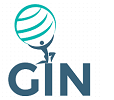The booming population is leading to a rising demand for all kinds of infrastructure, including houses, factories, shops, hospitals, and schools. As a result, the construction industry is growing around the world, which is driving the demand for all kinds of raw materials. One of the basic raw material in construction is the humble brick, which has been now replaced to a substantial degree by cinder blocks. With further advancements in technology, the usage of autoclaved aerated concrete (AAC), a precast material, is rising.
It is a lightweight material that offers appreciable insulation, structural integrity, and mold and fire resistance. Due to so many benefits of this material, the autoclaved aerated concrete market value is set to grow from $4,498.5 million in 2019 to $8,314.9 million by 2030, at a 6.0% CAGR between 2020 and 2030. In this regard, P&S Intelligence also credits the demand for lightweight construction materials to be a key factor propelling the usage of AAC.
Compared to clay bricks, an AAC block puts 30% less weight on the foundation of a building. Although this material is lightweight, blocks and other structures made from it can better withstand earthquakes, the incidence and severity of which are increasing around the world due to rising tectonic activity. In recent years, such natural disasters have caused widespread damage and loss of billions of dollars, for instance, in Nepal and Haiti. Additionally, the production of clay bricks leads to considerable air pollution, which is another reason AAC is becoming popular.
Another strong driver for the autoclaved aerated concrete market is the rising construction of soundproof and green buildings. Since AAC is eco-friendly in its production, which can involve the recycling of the fly ash generated from industries and consumes more than 50% less electricity than the manufacturing of clay bricks, it has been accepted as a green building material. Thus, with the rising concerns related to carbon emissions by factories, power plants, and the construction sector, the usage of AAC in green buildings is increasing.
Additionally, a large part of the APAC region suffers from natural disasters regularly. For instance, being on the Pacific Ring of Fire, Japan is no stranger to volcanic eruptions, earthquakes, and tsunamis. Similarly, the northern, especially the mountainous, region of India is a high-tectonic-activity zone, as the Indian plate is continuously ramming into the Eurasian plate. Moreover, the east coast of India regularly battles strong cyclones. The high incidence of such natural calamities has created a need for stronger building materials.
Hence, as the construction sector advances around the world, more traditional materials will be replaced by AAC tiles, blocks, lintels, panels, joint fillers, pipes, and floor elements.
Source: www.psmarketresearch.com




















